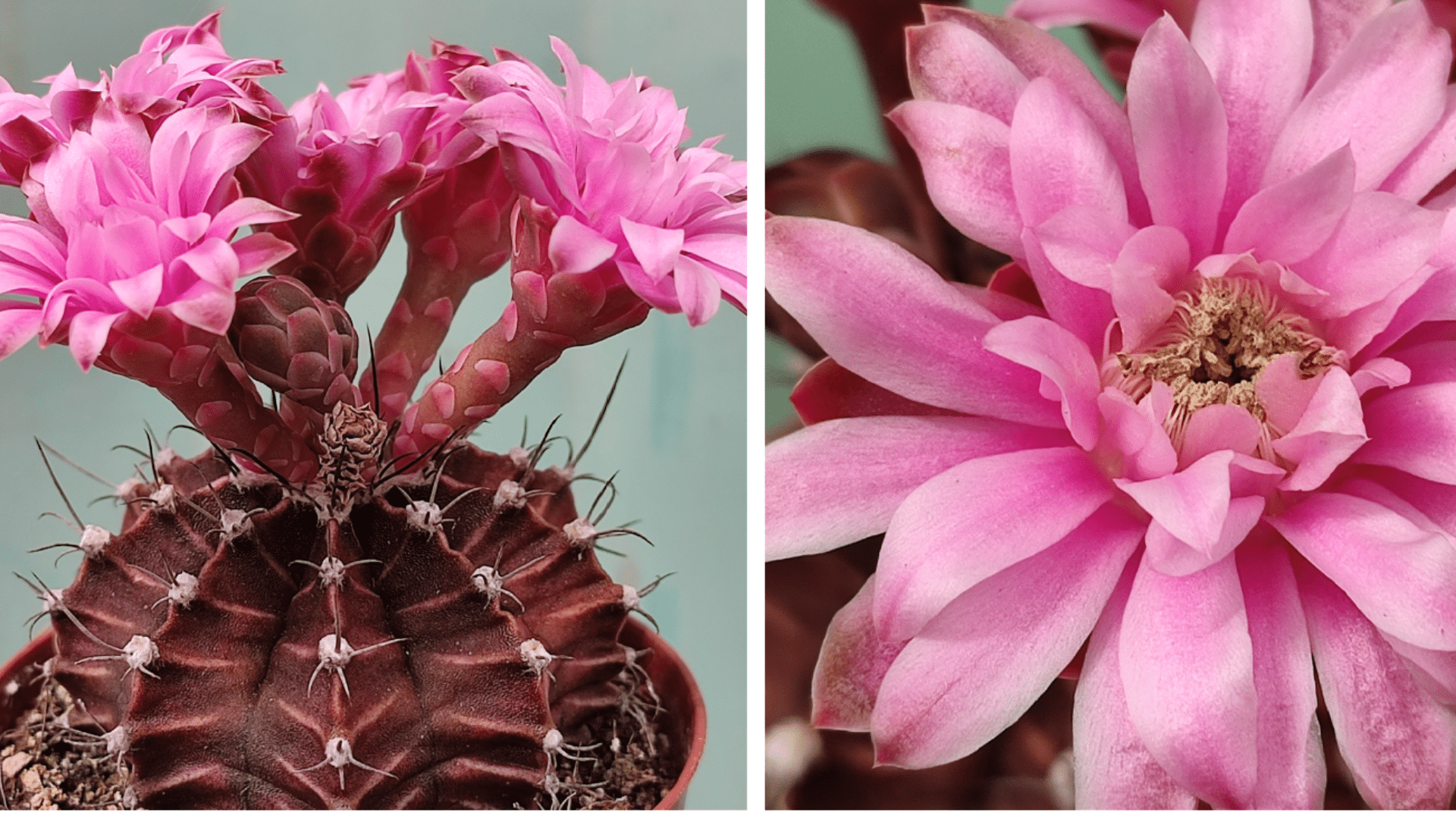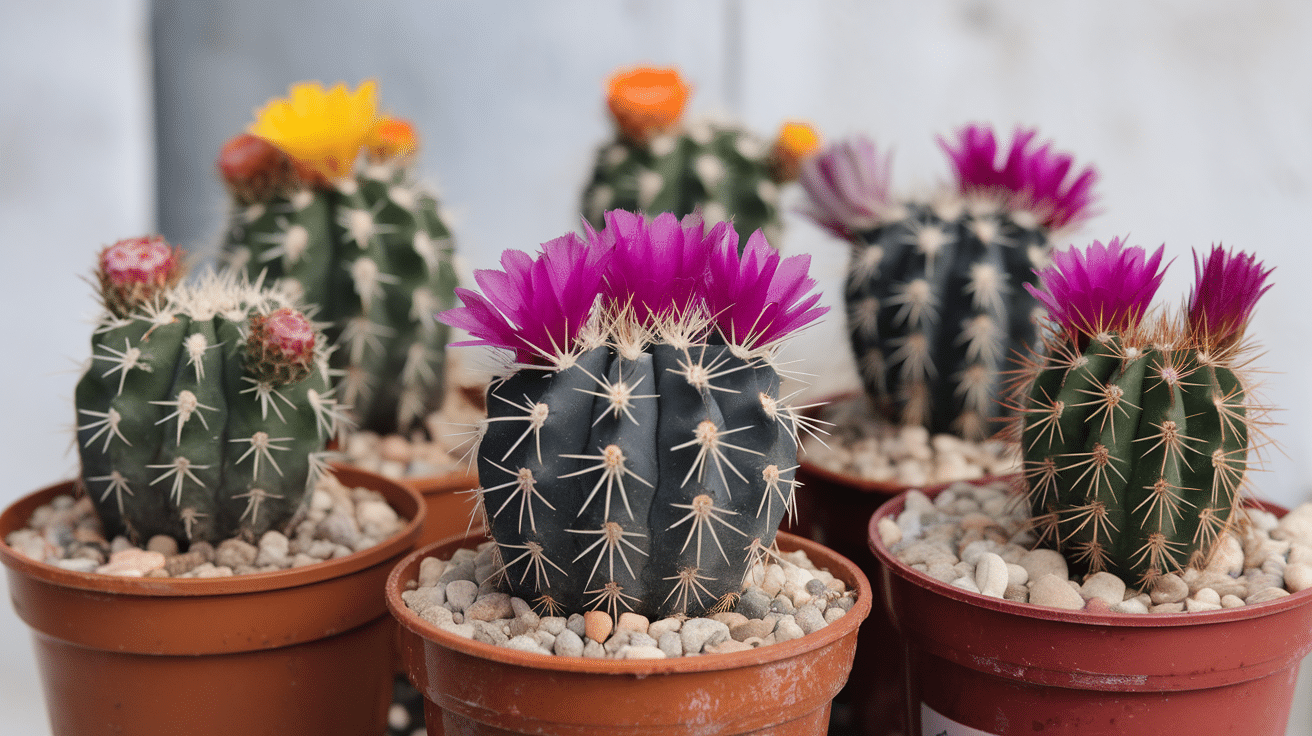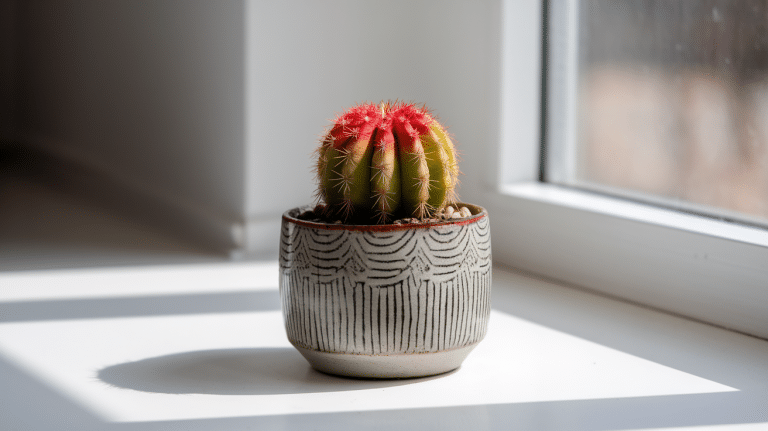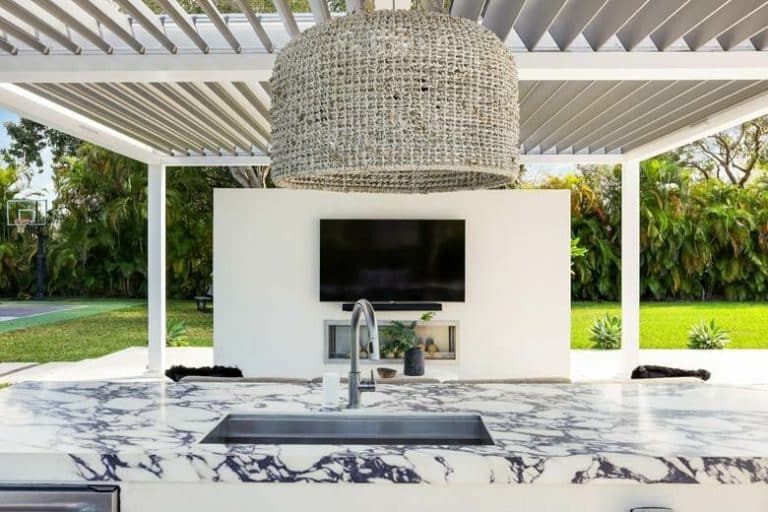Check out the charming Gymnocalycium mihanovichii, commonly known as the Moon Cactus – a South American botanical wonder that combines striking beauty with remarkable resilience.
This comprehensive guide covers everything from the cactus’s unique grafted structure and vivid color variations to its practical care requirements.
Perfect for both novices and experienced collectors, the Moon Cactus offers an ideal solution for plant enthusiasts seeking low-maintenance companions for small spaces.
Join us as we find out the origins, cultivation techniques, troubleshooting tips, and distinct benefits of incorporating these colorful cacti into your indoor garden landscape.
What is Gymnocalycium mihanovichii?
Gymnocalycium mihanovichii is a small cactus from South America that has gained popularity among plant lovers. Often called the “Moon Cactus,” this plant stands out due to its small size and bright colors.
According to reliable sources, it typically grows only 2-3 inches tall, making it perfect for small spaces. The most eye-catching feature is its round, colorful top portion that comes in bright shades.
As noted in botanical references, this plant belongs to the scientific family Cactaceae and the genus Gymnocalycium. Its full scientific name is Gymnocalycium mihanovichii. It is part of the plant order Caryophyllales.
The Variegated Form
What makes this cactus special to many collectors is its variegated forms. These are actually mutants that completely lack chlorophyll (the green pigment that plants use for photosynthesis).
Without chlorophyll, the natural red, yellow, or orange colors become visible. Since these colorful variants can’t make their food through photosynthesis, they’re usually grafted onto another cactus type called Hylocereus.
This combined plant is what most people recognize as the “Moon Cactus” in stores and gardens. The variegated forms come in stunning colors, including bright reds, yellows, and oranges, making them stand out among other houseplants.
Origins and Habitat
The Moon Cactus comes from specific regions in South America where it has developed unique traits to survive in challenging conditions.
Understanding its natural home helps explain its special needs as a houseplant.
Native Regions
Gymnocalycium mihanovichii naturally grows in Paraguay and northeastern Argentina. According to plant databases, this cactus has adapted to survive in rocky areas where many other plants can’t grow.
Its natural environment is quite dry, which has shaped how this plant stores water and handles harsh conditions.
Natural Growth
In the wild, this cactus grows as a single plant, unlike the grafted versions commonly sold in stores. The North Carolina Extension Gardener Plant Toolbox describes it as a “dwarf cactus” found in rocky areas of its native range.
The colorful varieties we often see in shops can’t survive on their own because they lack chlorophyll.
That’s why growers attach them to Hylocereus cacti, which act as a living support system. This grafting technique creates the two-toned appearance that has made the Moon Cactus so popular among plant collectors.
Unique Appearance of Gymnocalycium mihanovichii

The Moon Cactus stands out in any plant collection with its bold colors and unusual two-part structure that catches the eye.
Color and Shape
The most striking feature of Gymnocalycium mihanovichii is its vivid coloration. The top portion is brightly colored in red, yellow, and orange.
These colors are visible because these plants lack chlorophyll completely. The cactus has a small, round shape, typically growing only about 4 cm tall with a diameter of 5-6 cm as noted by LLIFLE.
Grafted Nature
Most Moon Cacti sold in stores are actually two plants in one. The colorful top portion is grafted (attached) to a green base cactus called Hylocereus.
This isn’t just for looks—it’s necessary for survival. The colorful top cannot make its own food through photosynthesis, so the green bottom cactus supplies nutrients to keep it alive.
Flowering
Despite its small size, the Moon Cactus produces flowers under the right conditions. Planet Desert notes that it bears yellow flowers during spring and summer.
LLIFLE describes these flowers as “not fully opening,” which adds to their charm. When blooming, they add another visual element to an already eye-catching plant.
How to Care for Gymnocalycium mihanovichii
Taking care of a Moon Cactus isn’t hard, but it does require specific care to thrive in your home.
1. Light Requirements
Moon Cacti need bright, indirect light to stay healthy. According to Succulents and Sunshine, these plants grow well indoors.
A Reddit comment mentions that their plants do best in “very bright, indirect light.” Avoid placing your Moon Cactus in direct sunlight, as this can harm the colorful top portion.
2. Watering
Allow the soil to dry completely between waterings. Planet Desert advises that this cactus “should be kept dry between two waterings.”
Overwatering is the main cause of problems with these plants. Make sure to check that the soil is completely dry before adding water. Reduce watering even further during winter.
3. Soil and Potting
Moon Cacti need well-draining soil. Planet Desert recommends “well-drained porous soil containing sand or perlite.”
A Reddit user shared that they use “extremely fast draining bonsai soil that is 75-80% inorganic.” Always choose pots with drainage holes to prevent water from collecting at the bottom, which can lead to root rot.
4. Temperature and Humidity
These plants prefer warm temperatures. Mountain Crest Gardens notes that “this cactus variety will not survive a hard frost,” but can be brought indoors to a sunny windowsill if temperatures drop.
They don’t need high humidity and actually prefer dry conditions, similar to their natural habitat.
5. Fertilization
Feed your Moon Cactus lightly during its spring and summer growing season. Use a cactus-specific fertilizer at half the recommended strength.
Avoid fertilizing in fall and winter, when the plant’s growth naturally slows down.
Propagation of Moon Cactus
Growing new Moon Cacti is a bit different from propagating other houseplants. Since the colorful top portions lack chlorophyll, special techniques are needed to create new plants.
With some patience and the right approach, you can expand your collection.
Grafting
The main way to propagate Moon Cacti is through grafting. This involves attaching the colorful Gymnocalycium mihanovichii to a green, chlorophyll-containing cactus like Hylocereus.
From the sources provided, this is how commercial growers create the Moon Cacti we find in stores.
The process requires carefully cutting both cacti and placing the colorful top directly onto the cut surface of the host cactus, allowing their tissues to bond together.
Stem Cuttings
For the base Hylocereus part, you can take stem cuttings and root them in well-draining soil.
However, the colorful top portion (the actual Gymnocalycium mihanovichii) cannot survive on its roots because it lacks chlorophyll.
Any new growth or “pups” that develop on the colorful top can be carefully removed and grafted onto a new host cactus. This must be done carefully to avoid damaging either plant.
Best Practices for Success
Timing matters for successful propagation. Based on information from the provided sources, it’s best to attempt grafting during the warm growing season when both plants are actively growing.
Use clean, sharp tools to prevent infection, and provide bright, indirect light during the recovery period.
Keep the newly grafted plants in warm conditions with minimal watering until the graft has successfully taken hold.
Common Problems and Troubleshooting
Moon Cacti are generally sturdy plants, but they can develop issues if their care needs aren’t met.
By knowing what to look for and how to respond, you can keep your Gymnocalycium mihanovichii healthy for years to come.
- Signs of Too Much Water: Yellow stems and soft, mushy spots. Cut back on watering immediately and check for root damage. Wait until the soil is fully dry before watering again.
- Root and Base Decay: often caused by excess moisture. Use pots with drainage holes and let the soil dry completely between waterings.
- Failed Graft Connection: Watch for a loose top section or major color changes. If this happens, try attaching the top to a fresh base cactus.
- Pest Invasion: Look for tiny white fuzzy spots (mealybugs). Remove them with rubbing alcohol on a cotton swab or gentle soapy water.
- Dull or Fading Colors: Often caused by too much direct sun. Move to a bright spot without harsh, direct light.
- No Flowers Appearing: During the spring and summer growing months, your plant may need a bit more light or a small dose of cactus food.
Gymnocalycium mihanovichii Life Cycle and Lifespan
The Moon Cactus has a unique life journey compared to many other houseplants. While the natural Gymnocalycium mihanovichii can live for many years, the popular grafted versions we commonly find in stores have special considerations.
These cacti grow quite slowly, adding just a small amount of size each year. According to LILIFLE, the natural plant only reaches about 4 cm in height with a diameter of 5-6 cm, even when mature.
This slow growth rate makes them perfect for small spaces, as they won’t outgrow their spot. The lifespan of a Moon Cactus depends largely on how it’s grown.
The grafted versions typically live between 2 and 5 years, as the connection between the colorful top and the green base can eventually fail.
However, with expert care and occasional regrafting to a new base when needed, these plants can be kept alive much longer.
The natural, non-grafted green versions can live for decades under proper conditions, but these are rarely found in regular plant shops.
Benefits of Owning a Moon Cactus
The Moon Cactus, with its vibrant colors and low-maintenance nature, has become a popular choice for both novice and experienced plant enthusiasts.
This small yet striking plant offers practical benefits while adding a decorative element to any indoor space.
- Visually striking with bright colors that create an eye-catching focal point.
- Its compact size makes it perfect for small spaces like windowsills and desks.
- Beginner-friendly plant that “thrives on neglect,” according to experts.
- Minimal care requirements with infrequent watering and no pruning needed.
- Adaptable to dry environments and homes with heating systems.
- Contributes to air purification, though modestly due to its small size.
Gymnocalycium mihanovichii Varieties

The Moon Cactus comes in several striking varieties, each offering unique colors and characteristics for plant enthusiasts.
Several cultivars of Gymnocalycium mihanovichii are available on the market. The most common are grafted versions with colorful tops in red, yellow, or orange.
There’s also Gymnocalycium mihanovichii friedrichii, known as the “Purple Moon Cactus,” which Trex Plants describes as “the natural colored cousins to the neon pink, yellow, and orange” varieties.
For collectors, there’s the Gymnocalycium mihanovichii f. variegata, which shows natural variegation patterns. Another option is the Hibotam Yellow variety mentioned by Planet Desert, which produces yellow flowers during its blooming season.
When choosing, consider your light conditions. The colorful mutant types need bright, indirect light but must be protected from direct sunlight.
The more natural varieties with some chlorophyll can generally handle slightly more direct light.
Conclusion
The Moon Cactus (Gymnocalycium mihanovichii) brings vibrant color and character to any plant collection with minimal effort.
Remember to provide bright, indirect light, water sparingly, and use well-draining soil for best results.
This small cactus is perfect for beginners, busy plant owners, and those with limited space. Its slow growth rate and modest size make it ideal for desks, windowsills, and small shelves.
Whether you choose a bright red, orange, yellow, or purple variety, you’ll enjoy its unique appearance and low-maintenance nature.
Consider adding this cheerful little plant to your collection and experience the joy of watching it thrive in your home.













